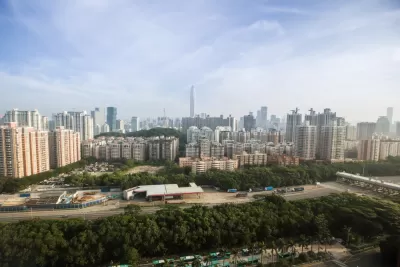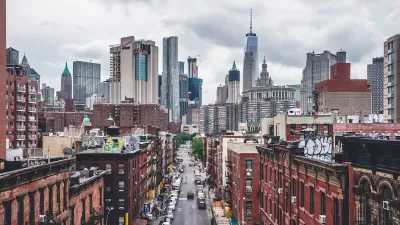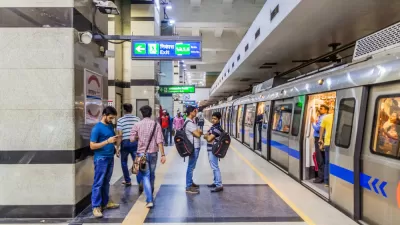A novel approach to quantifying the world's urban population provides insight into a changing world.

The European Commission and the Organization for Economic Cooperation and Development (OECD) recently presented "groundbreaking new mapping research" at World Urban Forum 10, concluding that there are around 10,000 cities in the world.
Gregory Scruggs shares insight into the unprecedented effort to document and define the contemporary city in an article for Next City. Nailing down a definition of cities is surprisingly challenging. Nuances can neglect huge swaths of the built environment or in wildly different population estimates.
No two countries define cities the same way, notes Scruggs: "In Denmark, 200 people living near each other constitutes a city. In Japan, the threshold is 50,000," for example.
The new mapping project overcomes some of those challenges by adding a third definition besides urban and rural: the town. According to Scruggs's explanation of the new definition, "over a quarter of the planet lives in towns — like those Danish hamlets of 200-odd souls — a category that the world has largely ignored in its preference for an urban-rural binary, the idea that someone either lives in a city or in the countryside."
A few findings from the study stand out: half of the world's 10,000 cities didn't exist 40 years ago, for example, and 20 percent of the world's cities are shrinking. "[Shrinking is] getting more common in countries where the population has started to stagnate or decline," according to a quote from OECD’s head of urban statistics, Rudiger Ahrend, included in the article.
FULL STORY: There are 10,000 Cities on Planet Earth. Half Didn’t Exist 40 Years Ago

Planetizen Federal Action Tracker
A weekly monitor of how Trump’s orders and actions are impacting planners and planning in America.

Maui's Vacation Rental Debate Turns Ugly
Verbal attacks, misinformation campaigns and fistfights plague a high-stakes debate to convert thousands of vacation rentals into long-term housing.

San Francisco Suspends Traffic Calming Amidst Record Deaths
Citing “a challenging fiscal landscape,” the city will cease the program on the heels of 42 traffic deaths, including 24 pedestrians.

Amtrak Rolls Out New Orleans to Alabama “Mardi Gras” Train
The new service will operate morning and evening departures between Mobile and New Orleans.

The Subversive Car-Free Guide to Trump's Great American Road Trip
Car-free ways to access Chicagoland’s best tourist attractions.

San Antonio and Austin are Fusing Into one Massive Megaregion
The region spanning the two central Texas cities is growing fast, posing challenges for local infrastructure and water supplies.
Urban Design for Planners 1: Software Tools
This six-course series explores essential urban design concepts using open source software and equips planners with the tools they need to participate fully in the urban design process.
Planning for Universal Design
Learn the tools for implementing Universal Design in planning regulations.
Heyer Gruel & Associates PA
JM Goldson LLC
Custer County Colorado
City of Camden Redevelopment Agency
City of Astoria
Transportation Research & Education Center (TREC) at Portland State University
Jefferson Parish Government
Camden Redevelopment Agency
City of Claremont





























